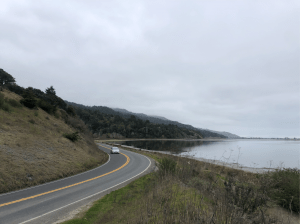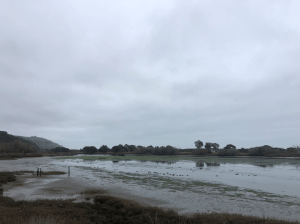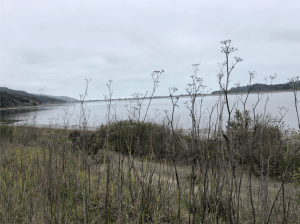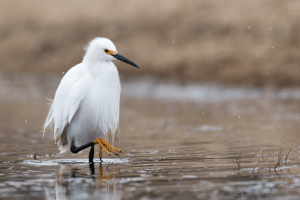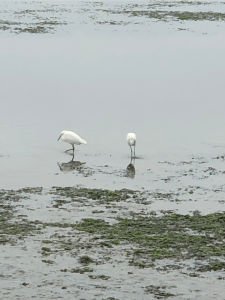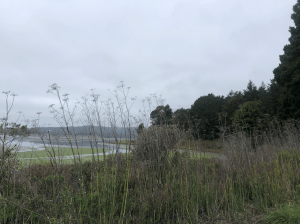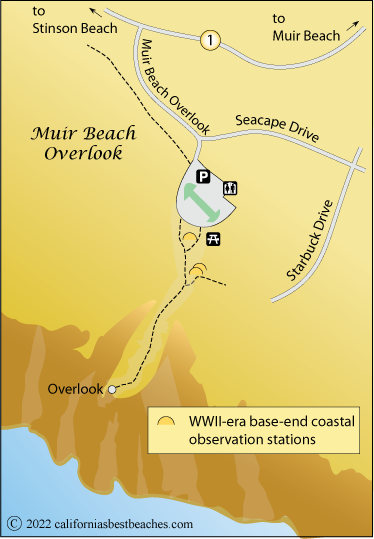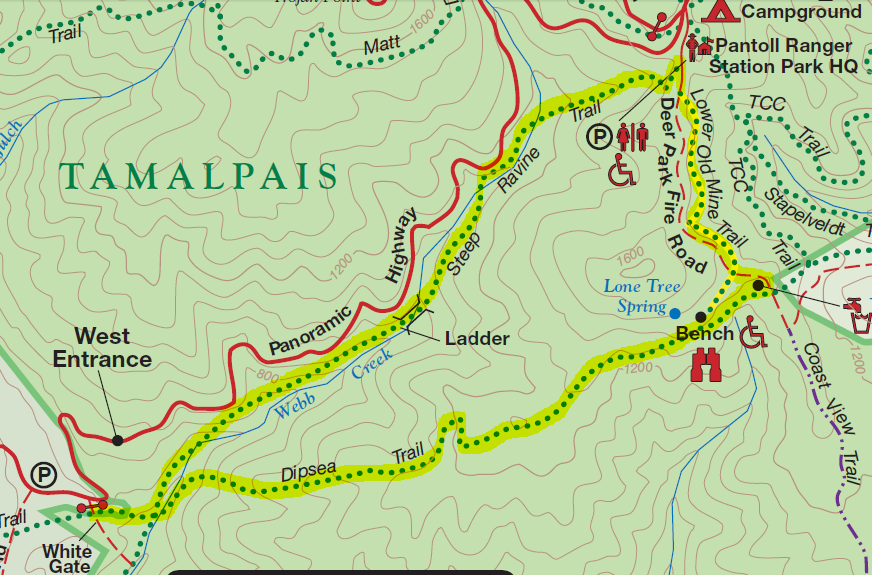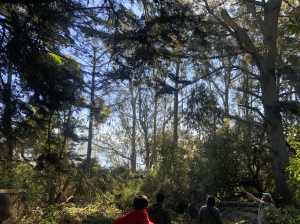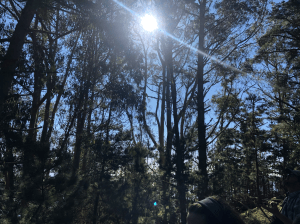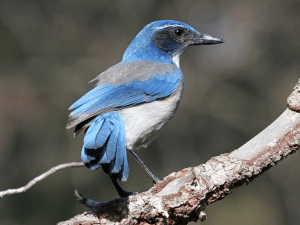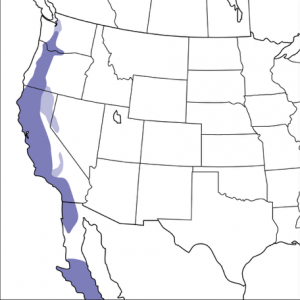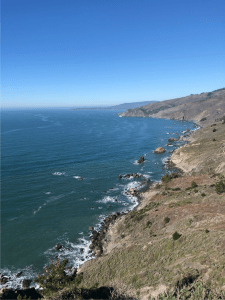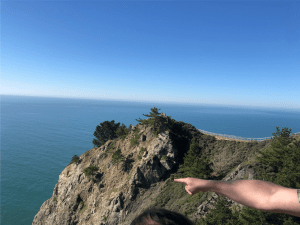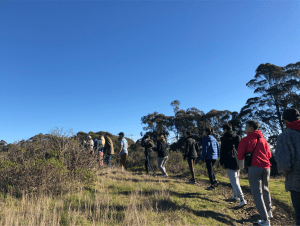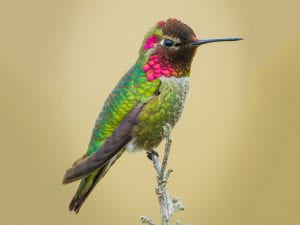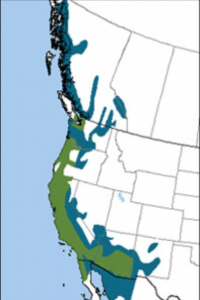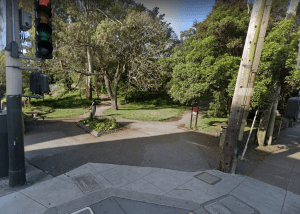Date: February 13th, 2020 – https://ebird.org/checklist/S64423949
Location: Stinson State Beach Wetlands near Willow Camp Fire Rd. – 37.894, -122.638 – Elevation: 8m/26ft
Site Description: We drove past Stinson State Beach to reach the Stinson Wetlands that are separated from the Pacific Ocean by mounds of greenery. The tides change within the wetlands and therefore the bird populations present as well as the hunting opportunities are altered with the changing water levels. The topography was largely flat and there was a long stretch of uninterrupted shallow water along the roadside.¹ It was common to see grasses and small bushes along the edge of the water, but larger trees were only seen on the opposite side of the road (more inland). The key bird species that can be seen in this area are shore birds and various types of ducks. We saw many American Wigeons in large groups as well as some Eurasian Wigeons, Mallards, and Pintails in the mix. Quite a few Long-billed Curlews were present as well as many Marbled Godwits, Larus species, and Snowy Egrets. It was common to see Turkey Vultures flying above as well as the occasional American Crow and Red-tailed Hawk. On the tree-lined side of the road, we saw a couple California Scrub-Jays and some Anna’s Hummingbirds. This site was good for seeing wading shore birds and duck species largely.
Species Account: Snowy Egret – Egretta thula (Pelecaniformes > Areidae) The Snowy Egret is a medium-sized white bird with a distinctive long, thin, black bill. Males and females look alike but males are slightly larger. Yellow lores are present between the eyes and bill (dark orange-yellow whereas the eyes are typically more true yellow). The adults have black legs and yellow feet. The Snowy Egret is common to wetlands, where they are often seen wading through shallow water and foraging. Smaller in size than the closely related Great Egret.² Snowy Egrets have distinct migration patterns for mating. We saw at least thirty Snowy Egrets (as well as a few Great Egrets) in the open wetland area near Stinson Beach. They were often seen near the edge of the open water and attentively looking into the shallow water for prey. Snowy Egrets eat mainly fish and crustaceans, but they can also eat worms, insects, snails, snakes, small lizards, frogs, and sometimes even aquatic vegetation. The hunting style typically follows a pattern of walking slowly through the water, stirring up the mud with its feet, and looking for prey.3
Narrative:We left the University of San Francisco around 8:20am on February 13th and arrived on site at the Stinson Beach Wetlands at 9:09am. Throughout the morning, we travelled to various turnouts along the road to witness different bird species along the continuous wetland that we studied. At these wetlands, we saw 23 different birds taxa (and several hundred individuals!) over a span of 130 minutes (~2 hours and 9 minutes) and a distance of 2.84 miles. I’m glad we were able to travel to an environment that was not similar to the environments we typically see in San Francisco. Now that I’ve seen some of the bird species that exist along the Marin Coast, I am excited to see the similarities and differences in the species that exist in coastal regions in San Francisco (ie: the Presidio, Baker Beach, etc.) The Stinson Beach Wetlands were cloudy throughout the morning (as was the city of San Francisco) with a high of 54° and a low of 44°.4 We left the Wetlands at 11:25am and returned to the Koret Parking Lot at 12:16am.
Additional Photos & Media: See below photos of the wetland side of the road vs. the wooded side of the road.
Sources:
¹ “Stinson Beach.” National Parks Service, U.S. Department of the Interior, www.nps.gov/goga/stbe.htm.
² “Snowy Egret.” eBird, The Cornell Lab, https://ebird.org/species/cowscj1.
3 “Snowy Egret – Egretta Thula – NatureWorks.” Snowy Egret – Egretta Thula – NatureWorks, www.nhptv.org/natureworks/snowyegret.htm.
4 “Stinson Beach, CA Monthly Weather Forecast.” The Weather Channel, 20 Feb. 2020, weather.com/weather/monthly/l/Stinson Beach CA 94970:4:US.

